Analysis of Health Outcomes: Migrant Farmworker Children in Georgia
VerifiedAdded on 2022/09/22
|7
|718
|22
Report
AI Summary
This report analyzes the health status of children of migrant farmworkers in Moultrie, Georgia, based on the article by Nichols, Stein, and Wold (2014). The study highlights the poor health outcomes experienced by these children, including higher prevalence rates of obesity, anemia, elevated blood pressure, and stunted growth compared to national averages. The report emphasizes the critical role of migrant farmworkers in the agricultural industry and the health disparities they face, often stemming from economic and social factors. The data was collected through the Farm Worker Family Health Program (FWFHP). The findings underscore the need for further investigation into the underlying causes of these health issues and the implementation of effective strategies to improve the well-being of migrant farmworker families. The study emphasizes the significance of addressing health inequities within this vulnerable population, highlighting the need for interventions to improve their overall health and well-being.
1 out of 7
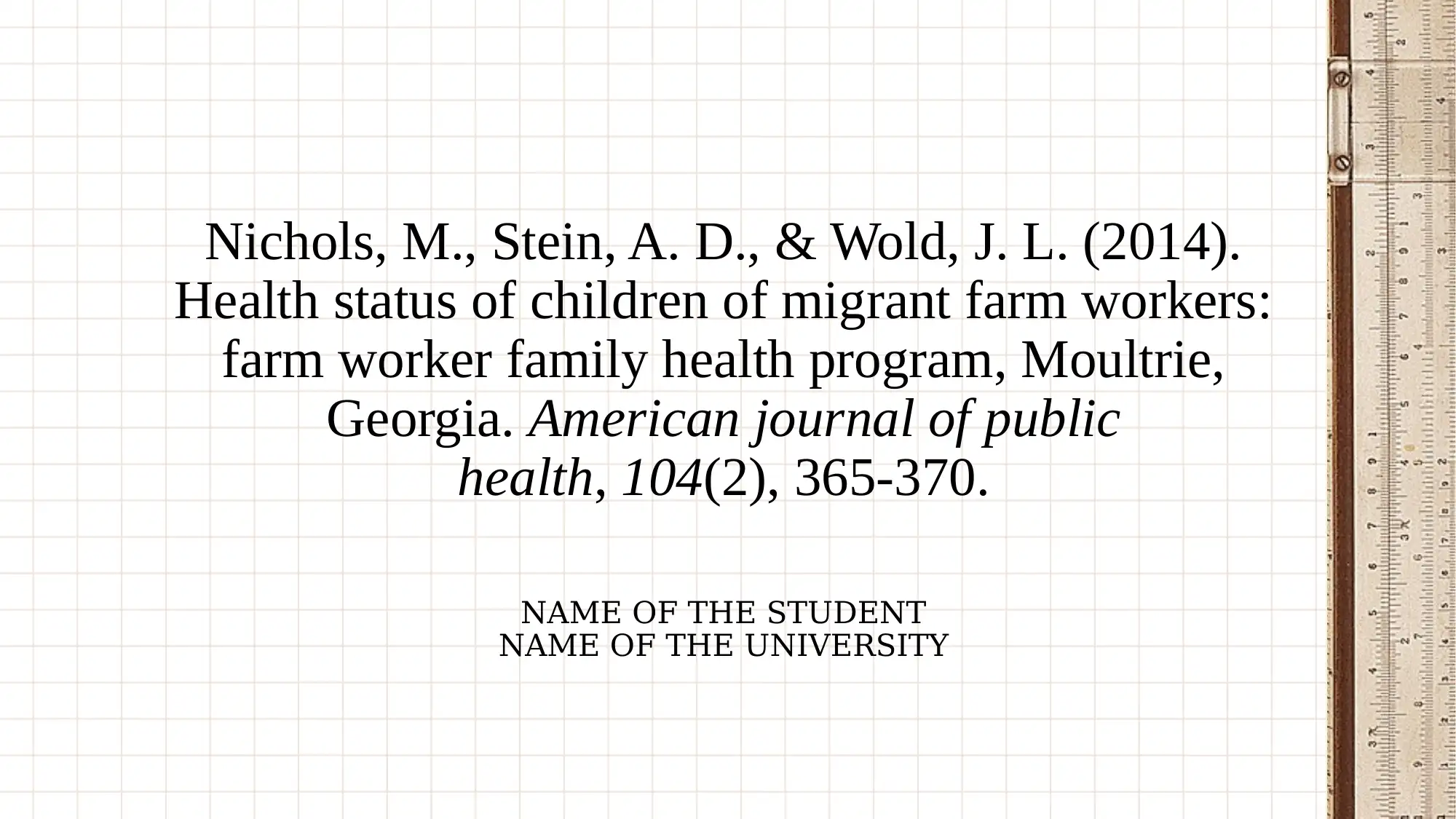
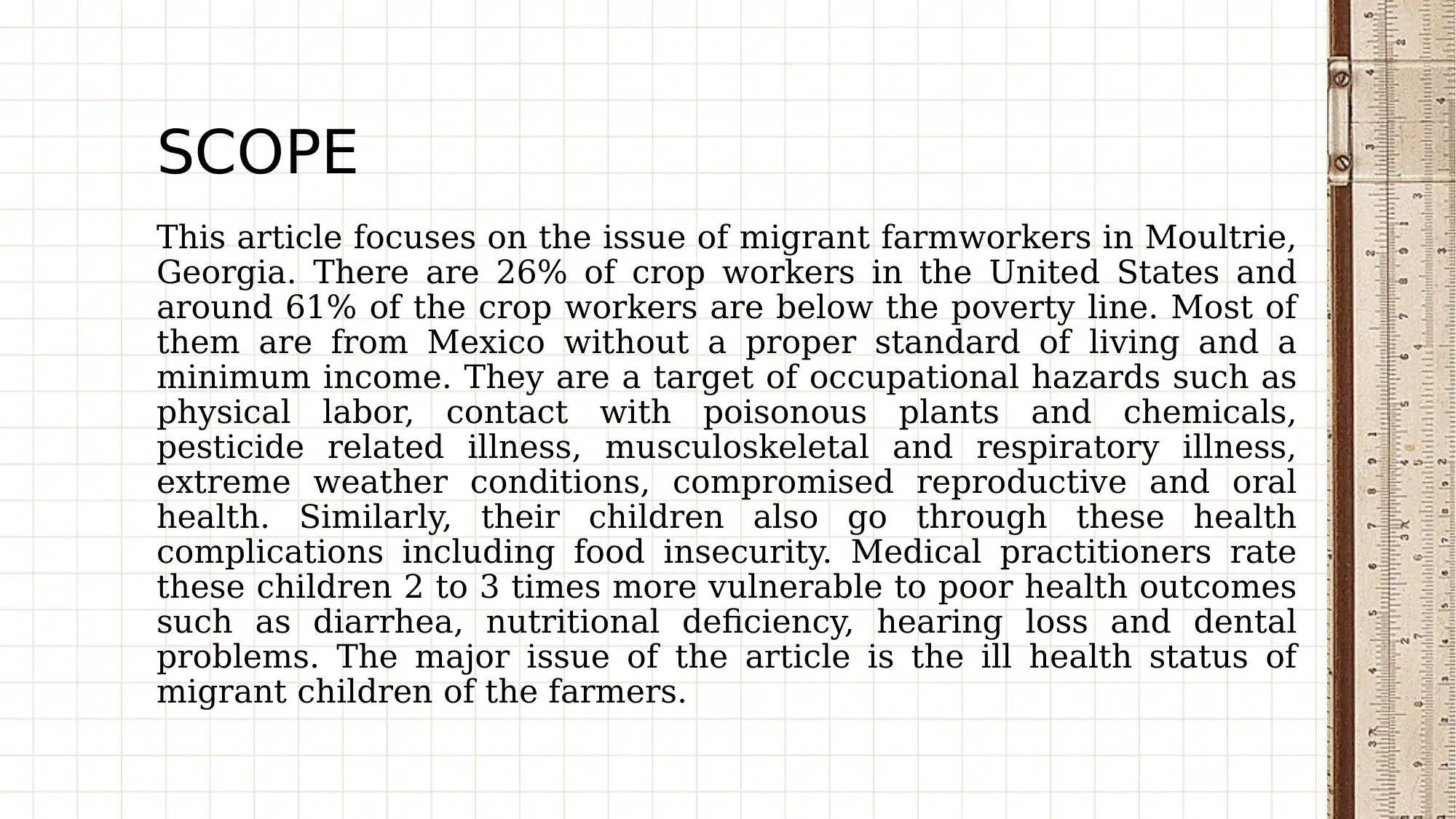
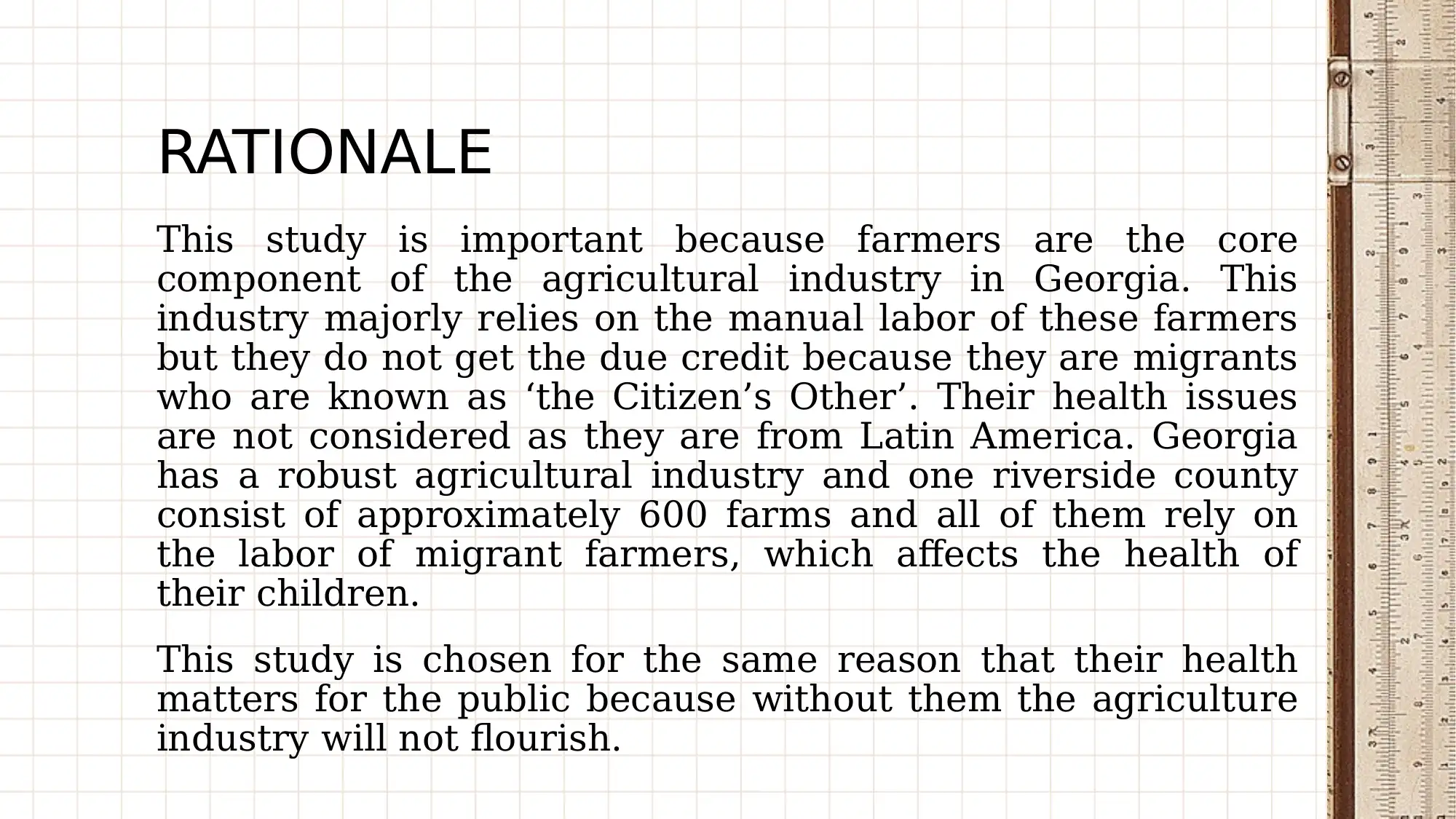

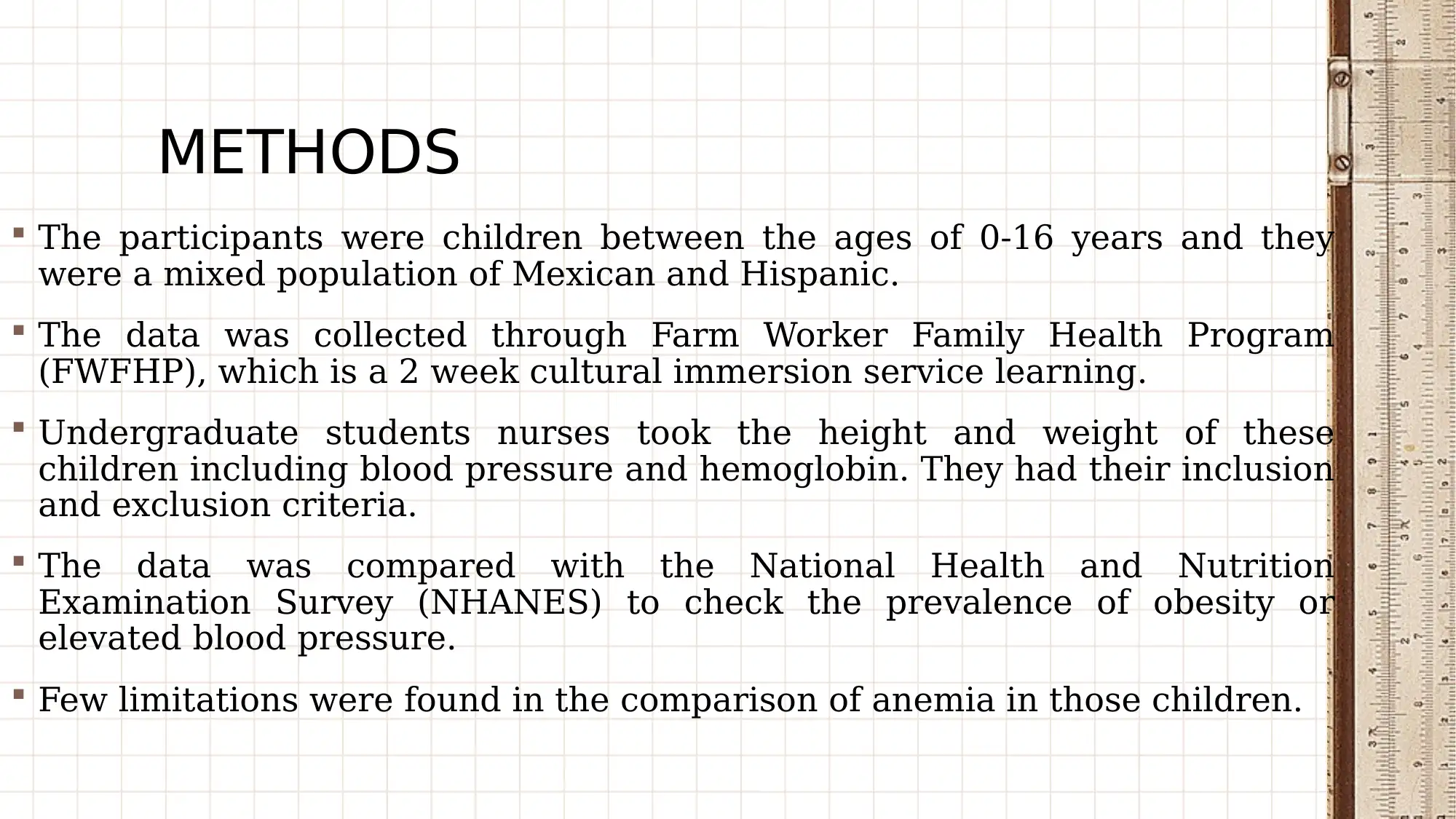
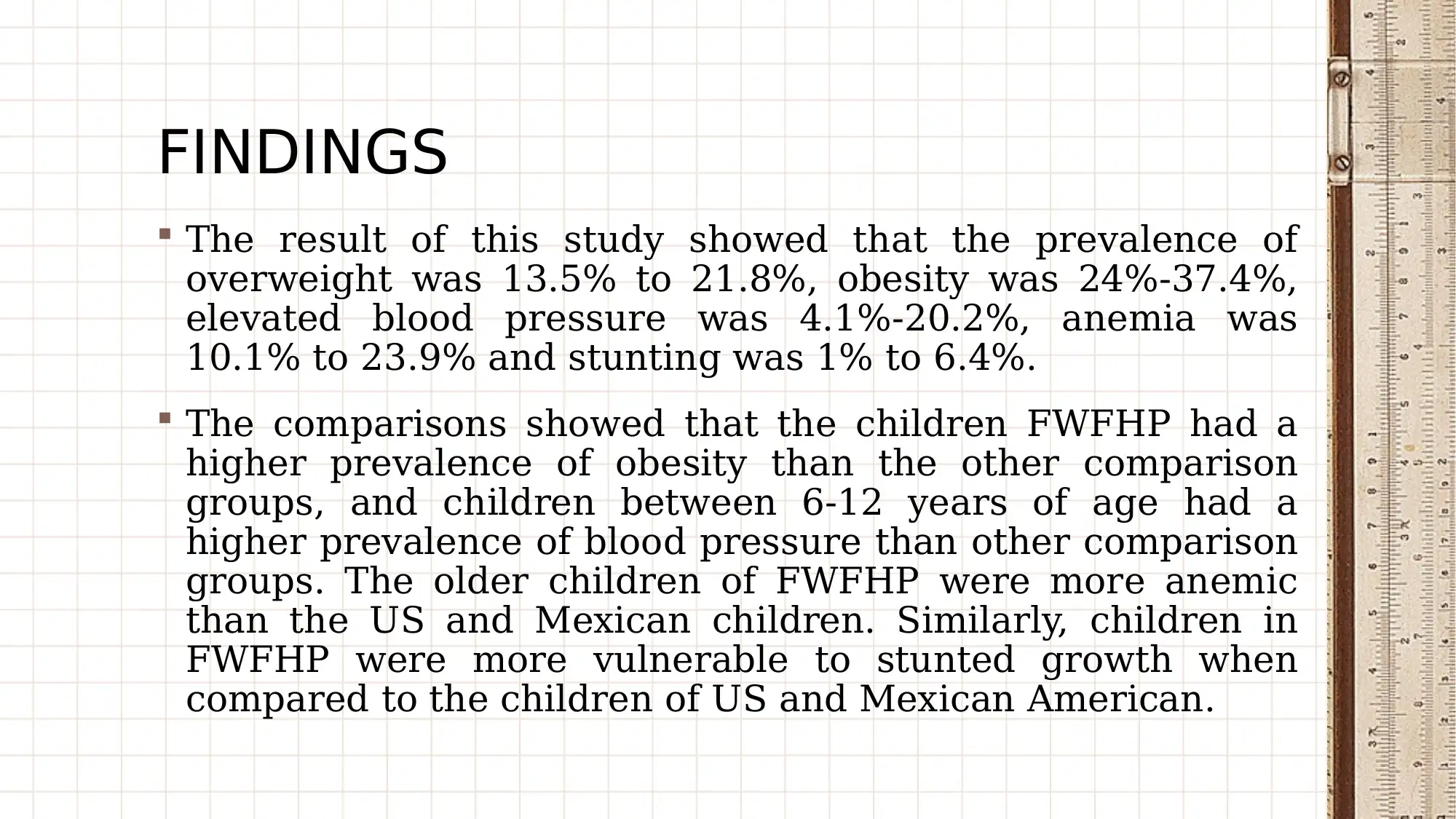
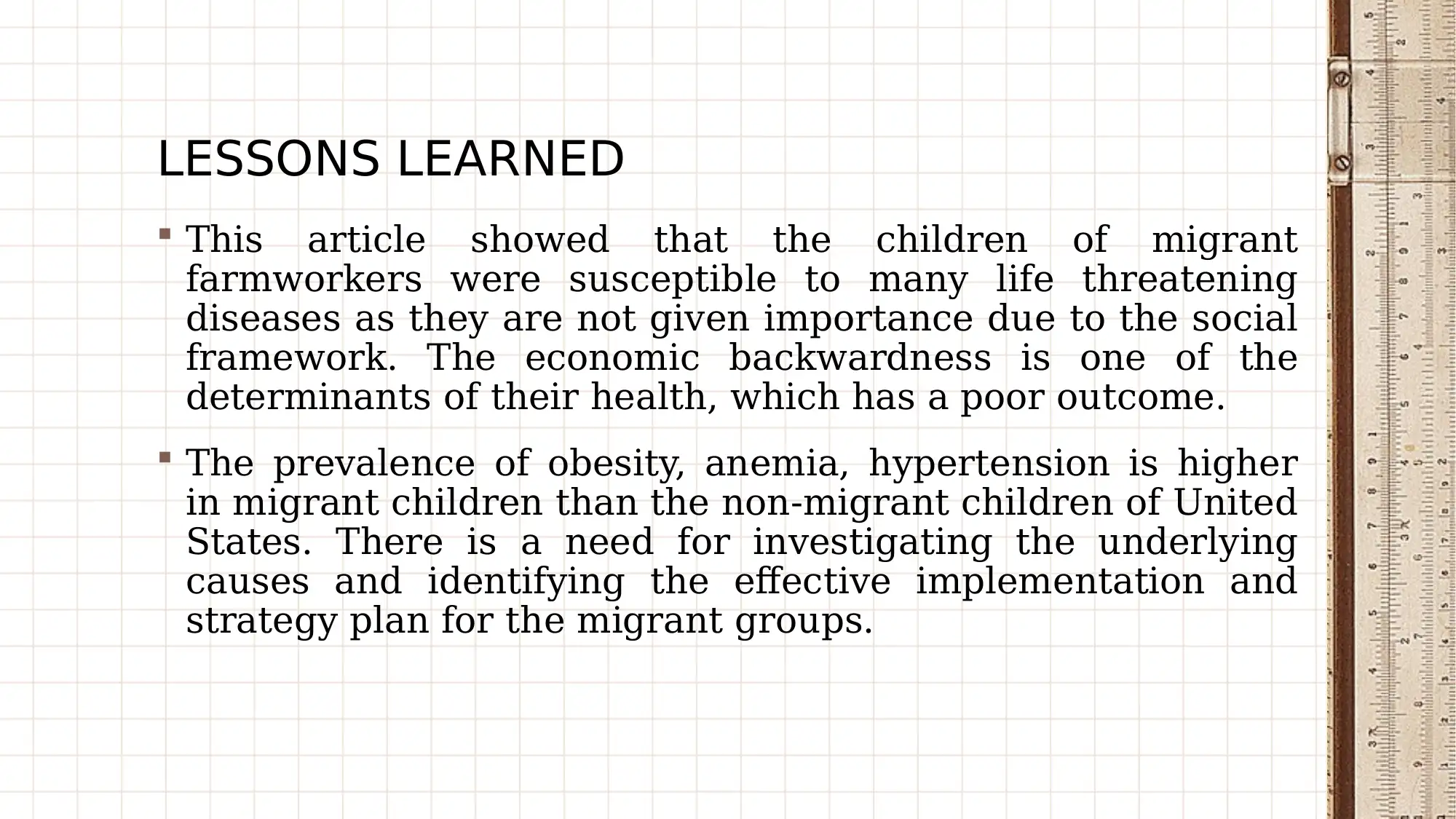

![[object Object]](/_next/static/media/star-bottom.7253800d.svg)